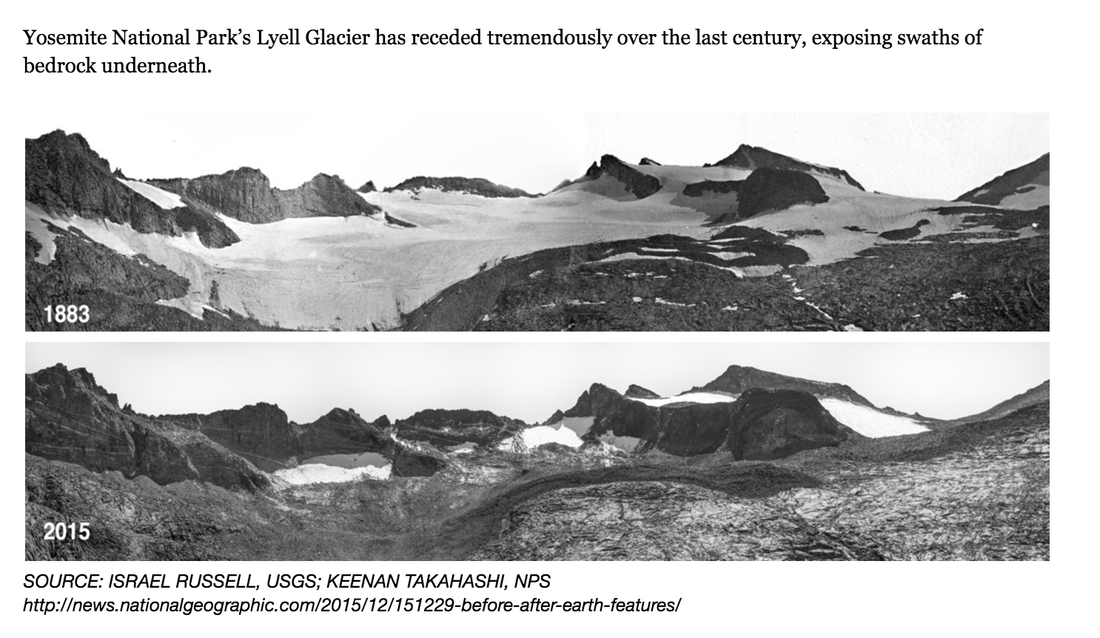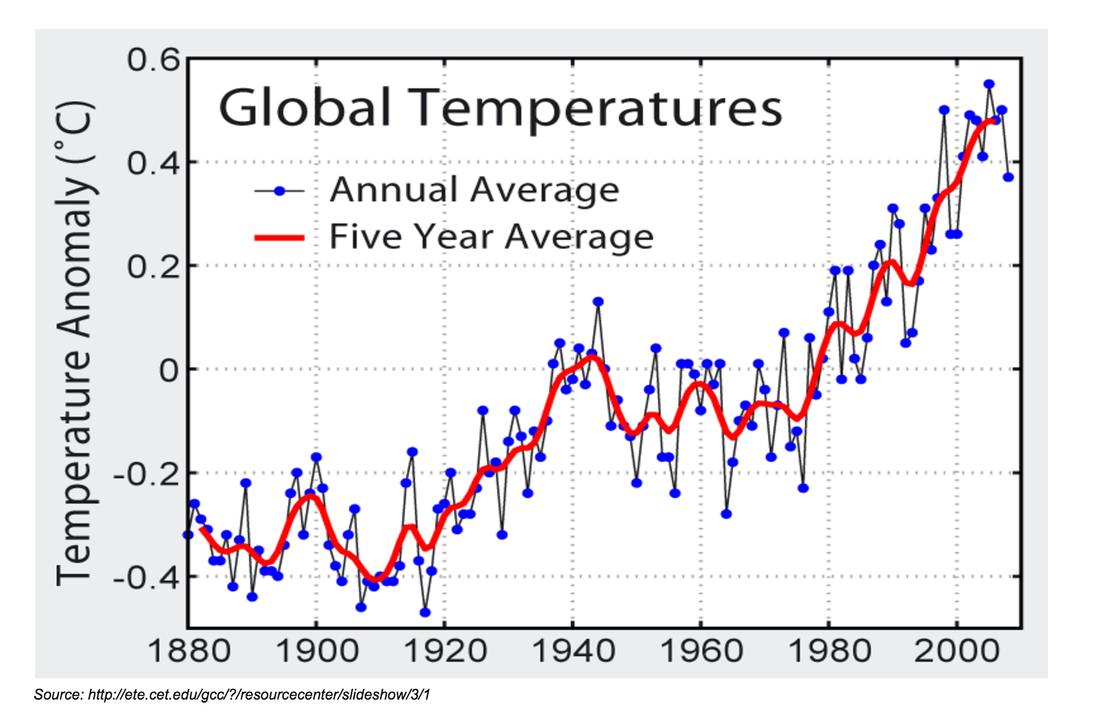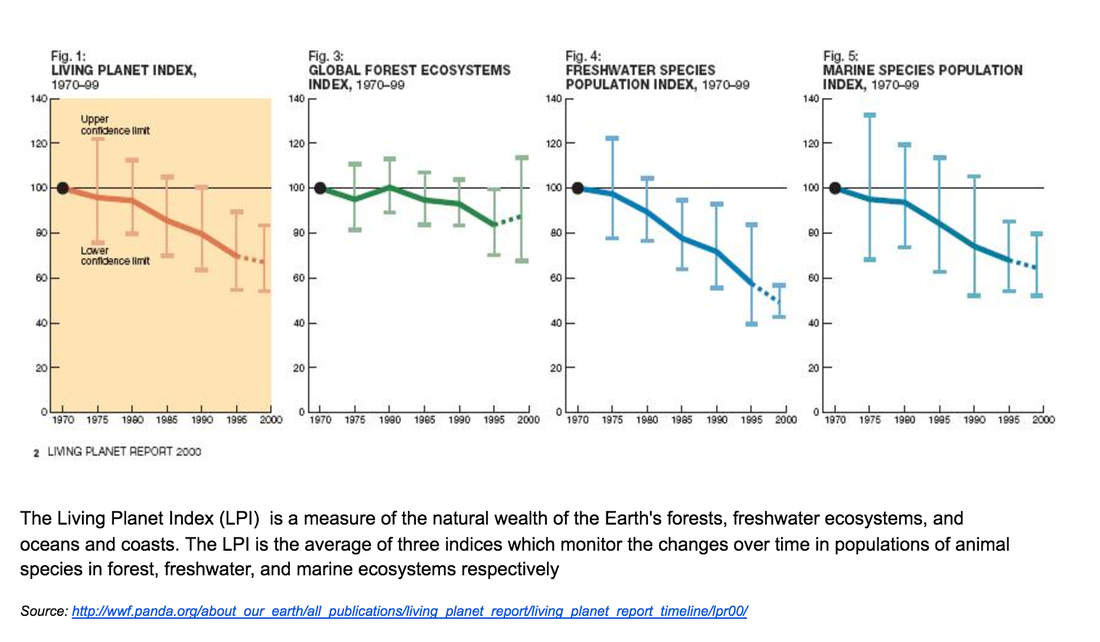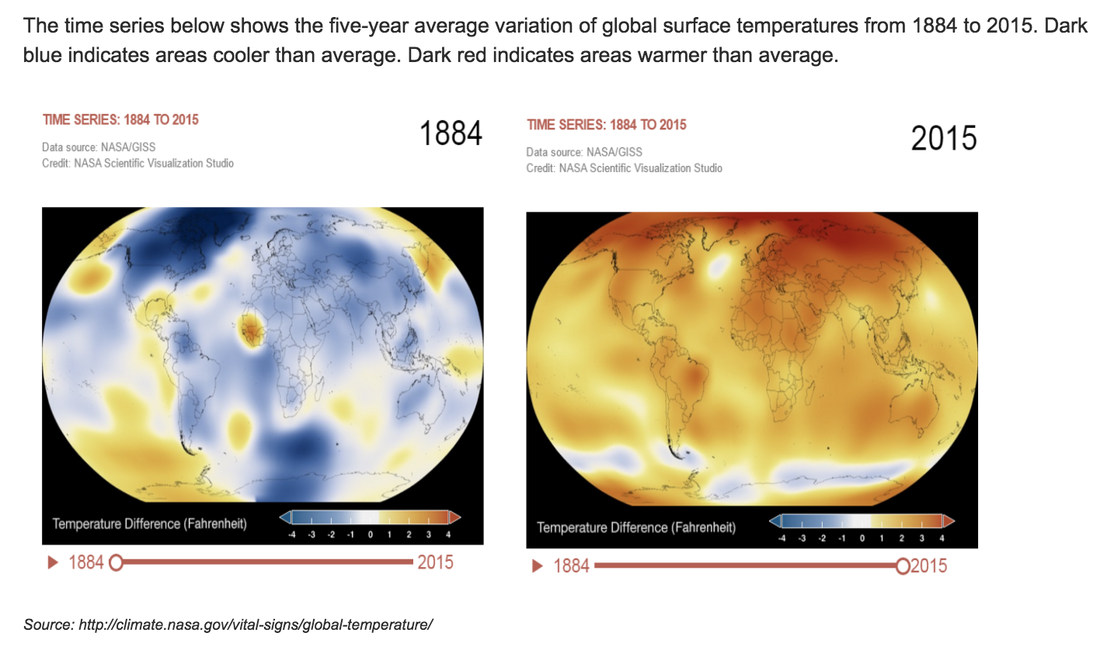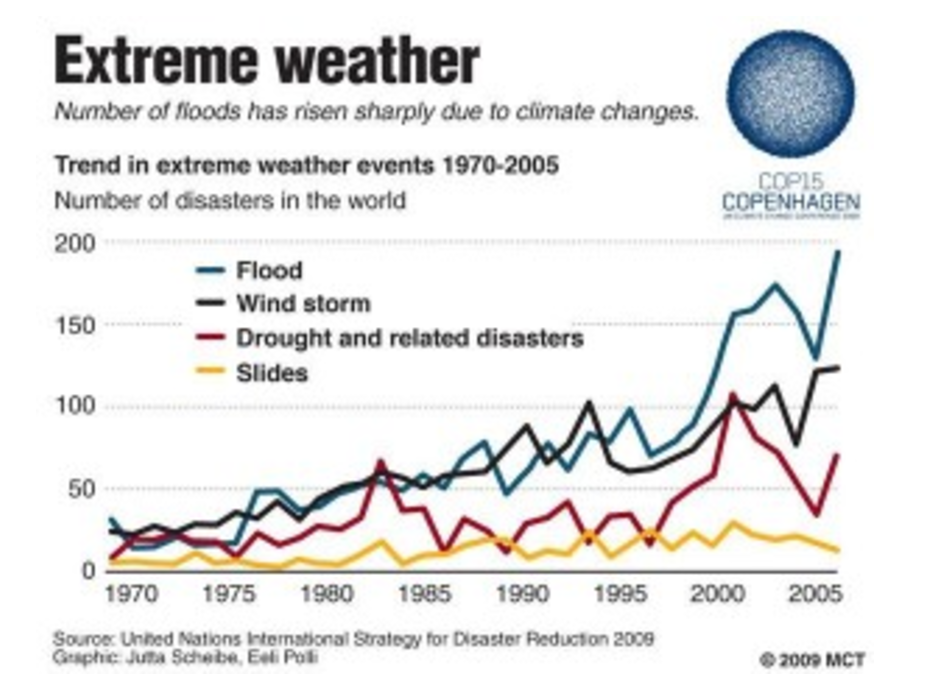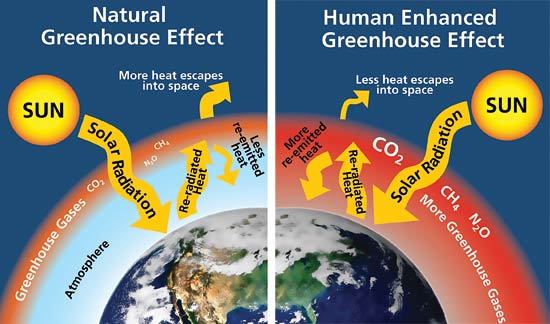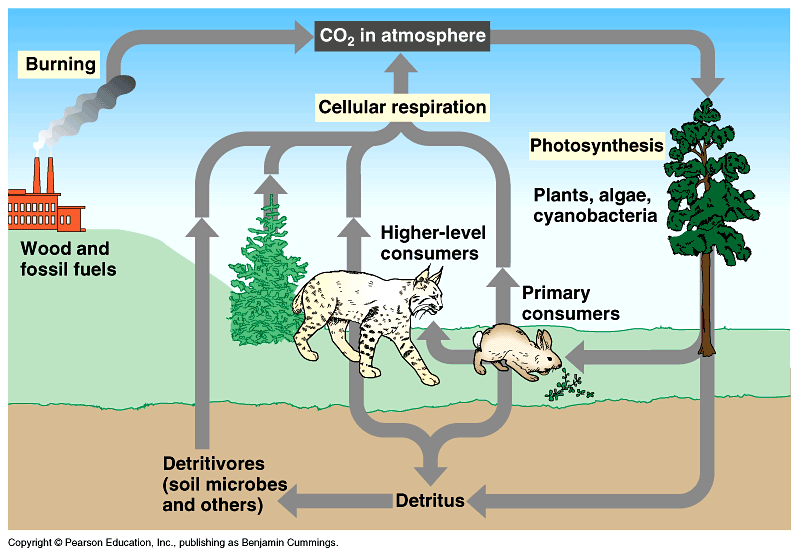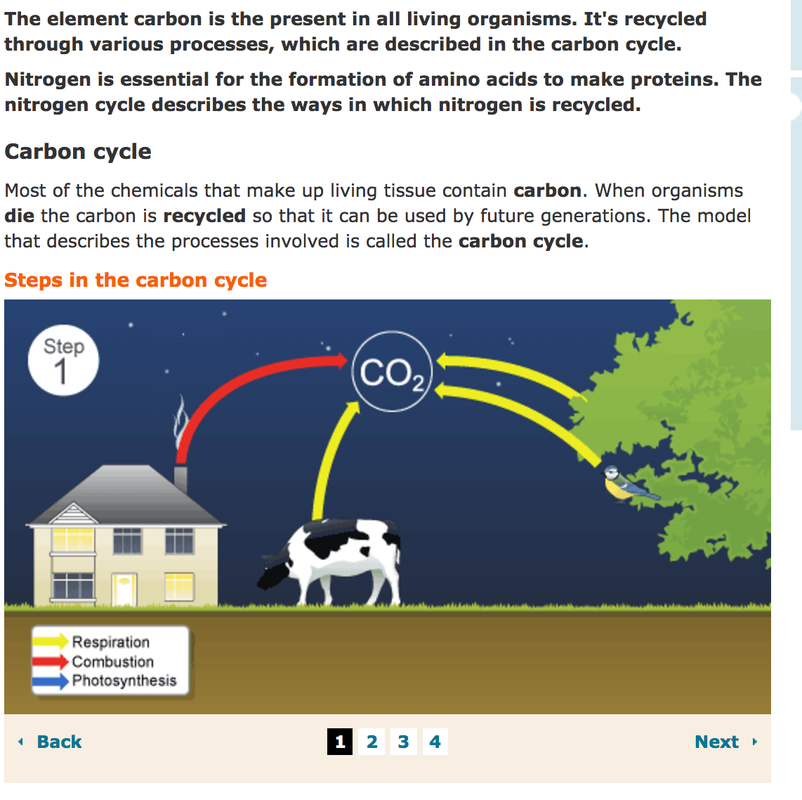Climate Change: Truth or fiction?
Task: Choose 2 videos to watch. Then, respond to the following questions:
- What is climate change?
- Not everyone believes in Climate Change. What are two pieces of evidence scientists use to argue that Climate Change is "real"?
|
|
|
Task: Choose 2 graphs to analyze. Then, create a SEE-THINK-WONDER table in your notebook OR respond to the following questions:
- What can you infer from the information provided?
- How does this connect to climate change?
- What questions do you still have about this information?
Task: Use the resources below to learn more about the factors influencing Climate Change and Global Warming. Then, respond to the following questions:
- What is the carbon cycle?
- How do the processes of photosynthesis and cellular respiration impact the carbon cycle?
- What is the greenhouse effect?
- What is the relationship between greenhouse gasses and the greenhouse effect?
Task: No matter how careful we are, each person must use resources that leave Carbon Dioxide behind. A person's Carbon Footprint is the amount of carbon dioxide that a person leaves behind. The carbon dioxide can then get trapped and lead to Climate Change and Global Warming, because there are so many people on Earth.
Use the resource below to learn about your carbon foot print". But, first, respond to the following question:
Then, after using the resource, finish the following statement and respond to the question:
Use the resource below to learn about your carbon foot print". But, first, respond to the following question:
- We can calculate your Carbon Footprint by stating how many Earths it would take to sustain your current habits. Think about your lifestyle, how many Earths do you think you think we will need?
- For example, "I think it will take 2 Earths to sustain my Carbon Footprint".
Then, after using the resource, finish the following statement and respond to the question:
- It will take _____ Earths to sustain my Carbon Footprint".
- Does this surprise you? Why or why not?
- What is something you could do to reduce your Carbon Footprint?
